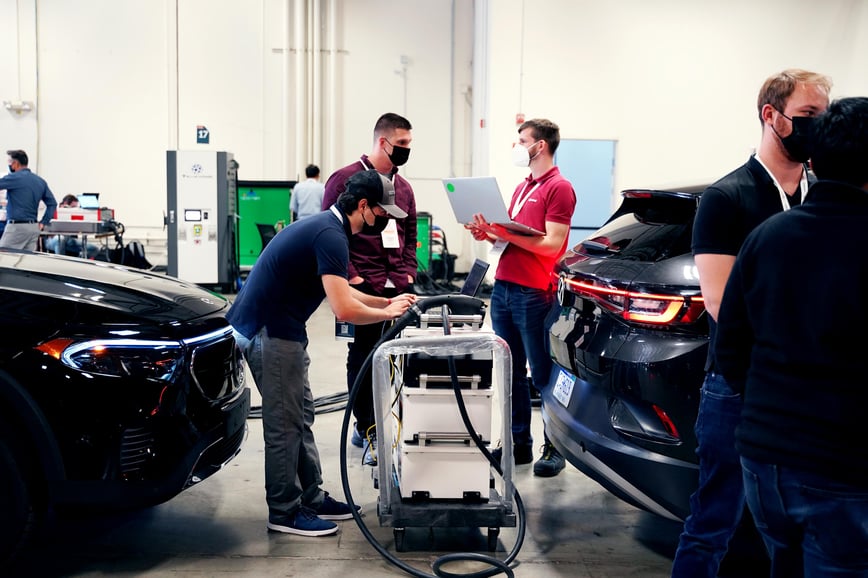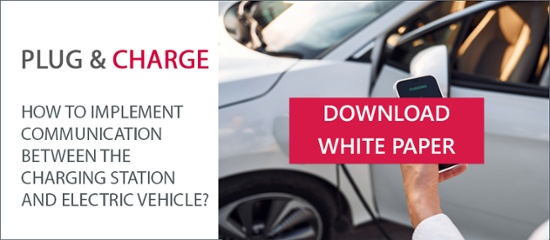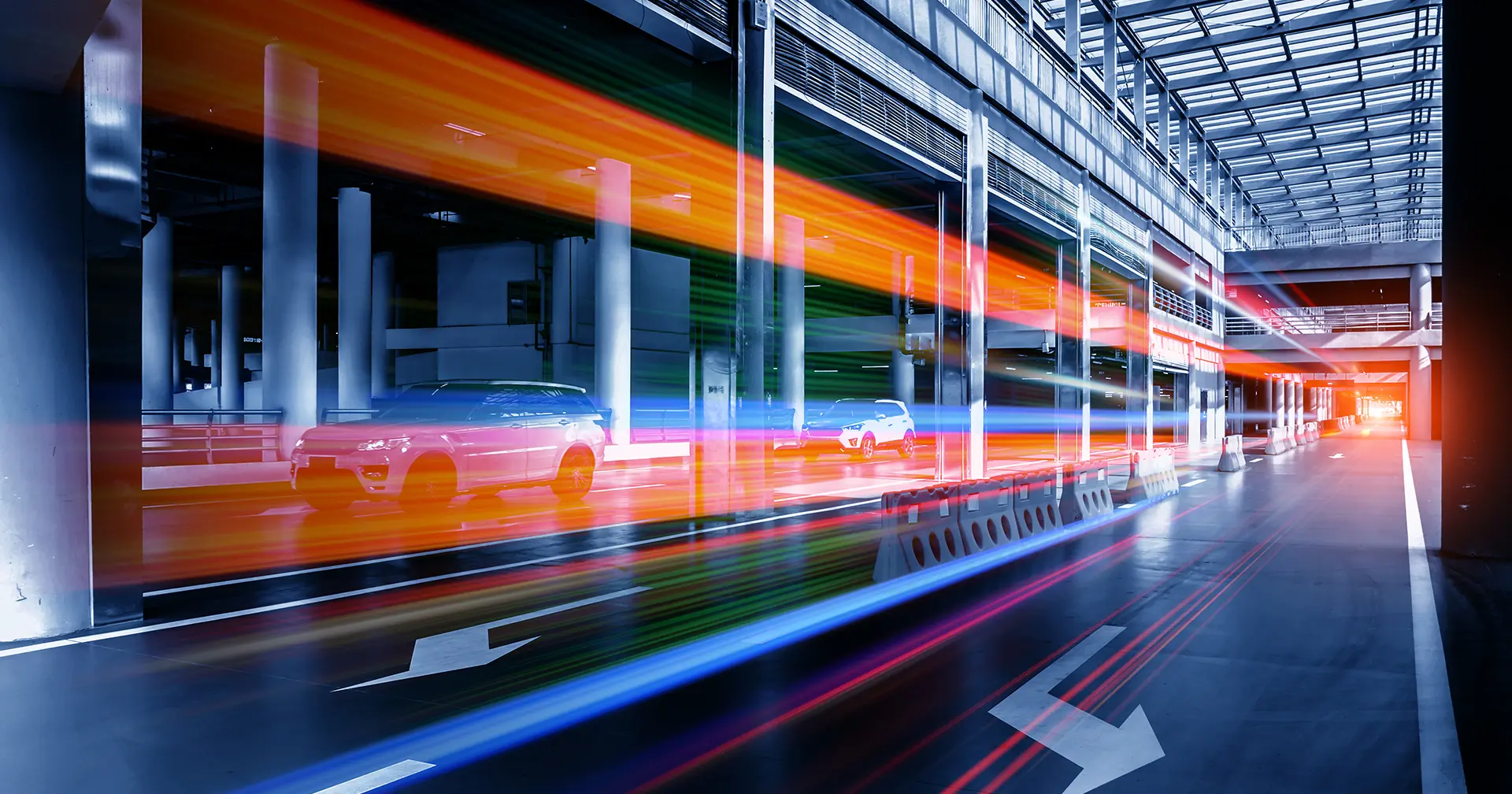Purchasers of electric cars have accepted that "refueling" takes longer than for a vehicle with a combustion engine. What is especially annoying, however, is when problems arise at the charging station, wasting even more time before the charging process even starts. Plug & Charge can help to remedy this situation. Interoperability requirements, however, are presenting charging station operators and vehicle manufacturers with major challenges.
The charging process seriously impedes the attractiveness of eMobility. Not only because recharging a battery generally takes longer than it does to fill a gas tank. Added to this is the fact that the handling is often significantly more complex – and not always successful. You need the "right" app, the "right" means of payment, and then the user interface of the charging station actually needs to work. The processes aren’t even the same everywhere. At some charging stations, you have to pay first and then plug in the charging cable. At others, it is not possible to pay until the connection between the car and charging station has been successfully established.
Should problems arise with reading the card or connecting to the smartphone and app, the charging process cannot be started. Waiting until the app required has been loaded and installed or trying out different credit cards needlessly wastes time. If the process is terminated and a second attempt needs to be made, this alone can easily take one and a half to two minutes before the current starts to flow. With gasoline-fueled vehicles, the tank can already be full in this time.
If this concerted effort still leads to nothing, you have to try to find another charging station, this time one that works. Which, at least outside of California or major cities, can prove to be a real challenge. The user experience with an electric car is therefore very different from that of a vehicle with a combustion engine, because filling up with gas is the same everywhere in the United States, as well as being quick and easy.
Comfortable solution in sight
The solution to such obstacles lies in the Plug & Charge standard. This technology ensures that the driver has to enter his or her payment data only once. As a rule, this happens using the corresponding app. If the car and charging station both support the Plug & Charge standard, once it has been plugged in, the car submits all the information needed for payment to the charging station, which activates the current flow following a successful handshake process. Problems reading the card or with confusing user interfaces then become things of the past.
Plug & Charge is included in the ISO 15118-2 standard. Some of the things this specifies are automatic customer authentication and the data transmission for billing. The first vehicles to support ISO 15118-2 have been announced for summer 2023; a relevant number of EV charging station will not be available until mid-2024. Until then, both vehicle manufacturers and the manufacturers and operators of charging stations have a great deal of homework to do. The successful implementation of Plug & Charge has turned out to be relatively difficult. Consequently, extensive development work needs to be carried out in order to be able to guarantee the end users a product that works.

EDAG Group experts exchange ideas with colleagues from other companies at Testival 2021 hosted by the CharIN Association.
Source: EDAG Group
Challenge for developers
For Plug & Charge to be able to keep its promise – simply plug in and the charging process begins – there is a need for a high degree of interoperability between charging stations and vehicles. The challenge is that there are a great number of players on both sides, and an even greater number of different technical platforms and systems. There are also many different approaches, starting with the operating systems, frameworks and interfaces to the control software. Added to this are various software and firmware versions and stages of development. Thanks to continuous updates, the systems used are frequently in a state of change.
And, as if that were not enough, account must be taken at local level of changes to the electricity grid that are being made by municipalities to encourage the adoption of electric vehicles and minimize the consequences of brownouts. All in all, then, the evolution of eMobility is occurring in a landscape which is changing dynamically on three fronts all at one time. Developing the systems in such a way that every car can interact with every charging station is therefore an enormous challenge.
Experienced partner
These market dynamics are putting the developers of Plug & Charge solutions under just as much time pressure as the negative user experiences made by their customers. In order to master this challenge, both charging station manufacturers and automotive manufacturers could benefit from external support. EDAG has the relevant experts who are completely up to date on international standards and understand the implications behind them. As the EDAG team is in close contact with both vehicle OEMs and the major charging station manufacturers, it is always up to date with regard to current developments on either side of the charging cable.
As well, within the framework of the global CharIN initiative (https://www.charin.global), we also network with other companies involved in the research and development of combined charging systems (CCS). In this way, EDAG can adopt the position of acting as a link between the two industries – charging stations on the one hand, electric cars on the other – and, with its combined know-how, contribute to reliable solutions characterized by their high interoperability.
Further information on Plug & Charge and how to implement communication between the charging station and electric vehicle can be obtained from Christopher Grimmer, EDAG Group project coordinator. Read our white paper "Plug & Charge Advances the Progress of eMobility", too, which can be downloaded here.






